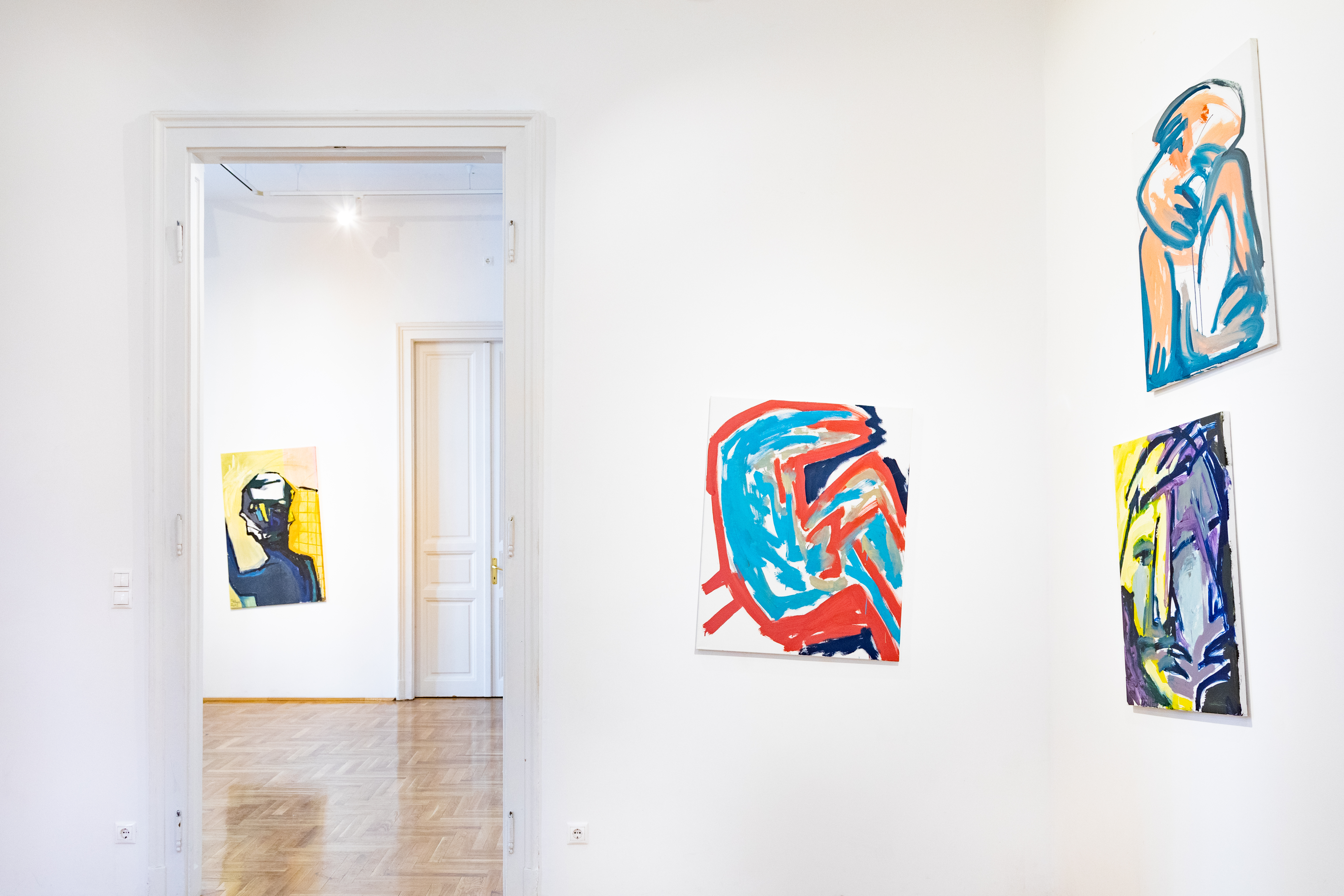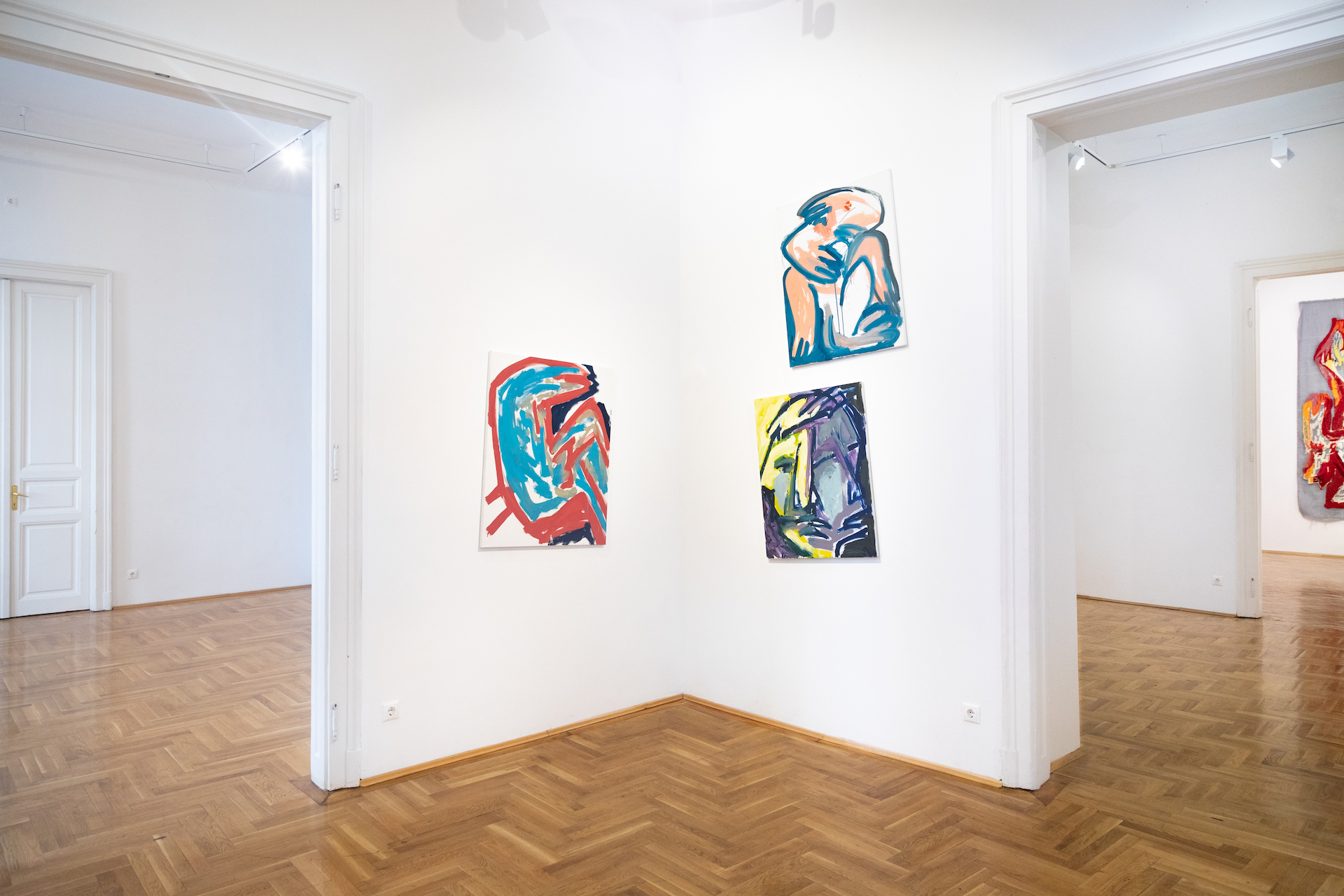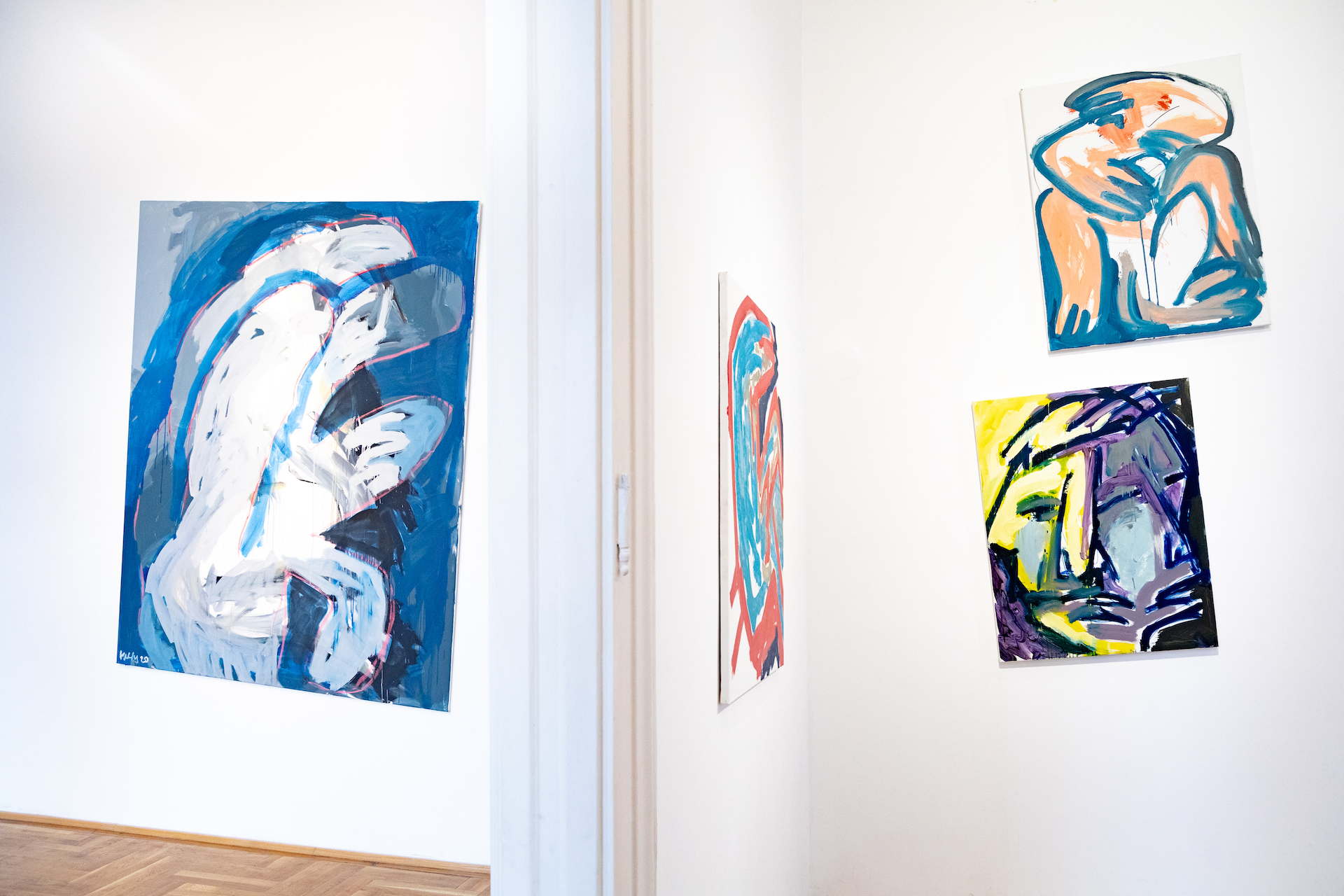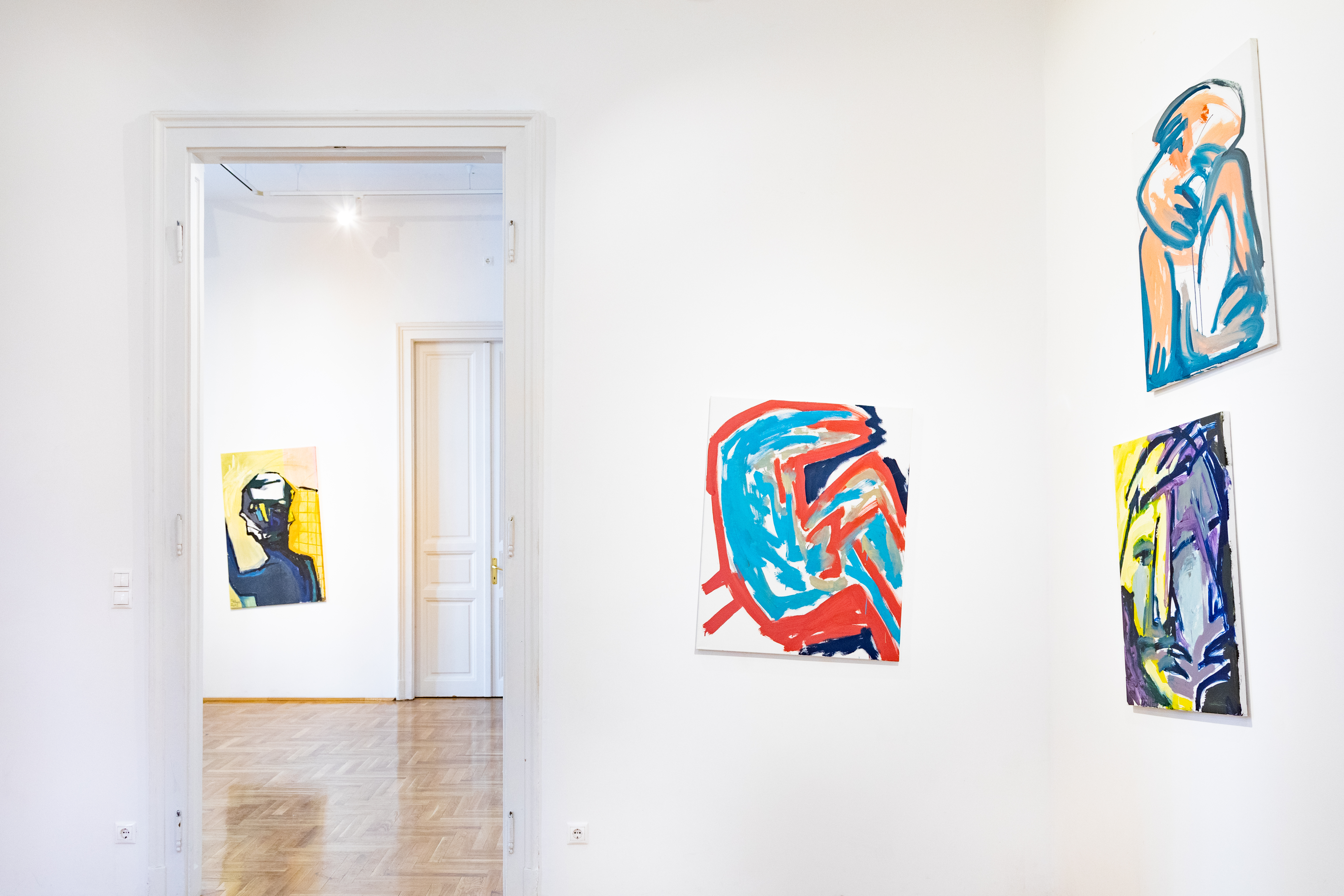Artist: Péter Puklus
Title: My Language is not Silence
Venue: Glassyard Gallery, Budapest
Photo: Lujza Hevesi-Szabó

In the turbulent and unpredictable period of the last two years, dominated by the pandemic, Peter Puklus
began to experiment intensively in his locked down studio. Putting aside the routine of his photographic work,
which had already been widely justified by the audience and professionals of the international art scene, he
started to work with new media and techniques. He drew dozens of sketchbooks full of reduced figurative
compositions, repeating over and over again searching the most condensed version of each motif, in an
attempt to find the most authentic final state of a particular formal composition. Just as in his photographic
series he always very consciously realised compositional schemes in his settings, worked out in advance
through sketches, this creative practice is even more spectacular in his paintings. The sketches serve as a
means of finding and elaborating the right form and gestural scheme, so that the change of scale on the
surface of the canvas reveals the motif already elaborated and reduced to its essential elements, while
preserving the elemental spontaneity of the gestures in the paintings.
The exhibition presents a narrowly thematic selection of paintings from recent years, primarily from the series
You Told I had Beautiful Hands, which depicts hands on large canvas, enlarged to huge scale, expressively
painted, forming various gestures with finger and palm movements. Puklus’s paintings, like his earlier
photographs, are drawn from highly personal experiences, moving in the realm of the intimacy of private life,
relationship conflicts, the emotional and psychological dynamics of the everyday, the experience of existential
exposure, the mid-life crisis, sexuality as a constant source of energy, and represent a kind of creative
liberation and living of self-reflection.
Another chapter in Puklus’s creative practice of experimenting with different techniques is the emergence of
the monumental tufted rug as a rather unusual medium, overloaded with cultural and personal experiences.
In addition to its numerous cultural-anthropological connotations, such as the striking prevalence of the tufted rugs in the ‘petty bourgeois’ domestic interior design practices of the 1960s and 1970s, the role of the ‘do-it-
yourself’ visual culture in the practice of interior design of homes, and the impact of all these visual influences of ‘vernacular modernism’ on the visual imagination of children growing up in this environment, the
‘imprinting factor’, etc. – for Puklus, the immediate sensory softness of the carpet is also linked to his
childhood experiences. The image from his childhood of lying on the tufted-rug next to his father is an
evocation of one of Puklus’s defining emotional relations, his conflicted relationship with his father, which has
already appeared in one of his earlier series of photographs. The monumental wall-hanging tapestry entitled
I’ve been Lying my Whole Life is a disturbed, emotionally overwrought authentic expression of this
psychological, introspective submersion, powerfully rendered with painterly gestures.
Barnabás Bencsik











